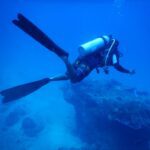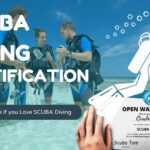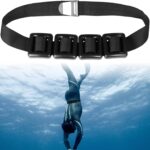What Does Scuba Diving Stand For
Many people have asked me “what does SCUBA diving stand for?” Let’s be honest, when most people hear that question, they picture someone in a wetsuit waddling like a duck, trying not to trip over their flippers, whispering “I stand for adventure!”
But in reality, “SCUBA” doesn’t stand for a lifestyle slogan like “Live. Laugh. Dive.” It literally stands for Self-Contained Underwater Breathing Apparatus. Yes, it’s an acronym. No, it’s not a tropical yoga class.
But behind that acronym is an entire universe – a thrilling, complex, beautiful, sometimes misunderstood activity that has captivated millions. Whether you’re just curious, mildly obsessed with ocean documentaries, or thinking about trying out this hobby, we’re going to break it all down for you.
What Does Scuba Diving Stand for
So, what does SCUBA diving stand for? SCUBA is an acronym: Self-Contained Underwater Breathing Apparatus.
Coined in the 1940s, it originally referred to the equipment used to let a person breathe underwater without being connected to a surface air supply. Think portable underwater lungs. The term gained popularity thanks to innovators like Jacques-Yves Cousteau, who co-invented the Aqua-Lung, revolutionizing underwater exploration.
So, when you ask, what does scuba diving stand for, you’re not just getting an acronym — you’re diving into a slice of history.
In everyday use, scuba diving refers to the recreational activity (or profession) of exploring underwater while using that self-contained breathing system. It “stands for” freedom, adventure, tranquility, and yes, sometimes nerves, expensive gear, and a couple of awkward wetsuit moments.
So now that you know what does scuba mean and the scuba meaning, let’s explore everything else people often don’t understand about it — including fears, training, safety, and more.
What Is Scuba Diving? (And How It Differs from Snorkeling or Free Diving)
What is scuba diving?
In its simplest form, scuba diving is a method of underwater swimming where the diver carries a tank of compressed air on their back, connected to a mouthpiece (called a regulator) to breathe.
You’re not holding your breath like in free diving, and you’re not floating at the surface like in snorkeling. Instead, you’re moving through coral reefs, sunken ships, or kelp forests, staying down for 30–60 minutes at a time or more, depending on your depth and air supply.
Key differences:
- Scuba = You breathe air from a tank.
- Snorkeling = You breathe from the surface using a snorkel.
- Free diving = You hold your breath and hope you make it back up before you regret your decisions.
What is scuba diving equipment?
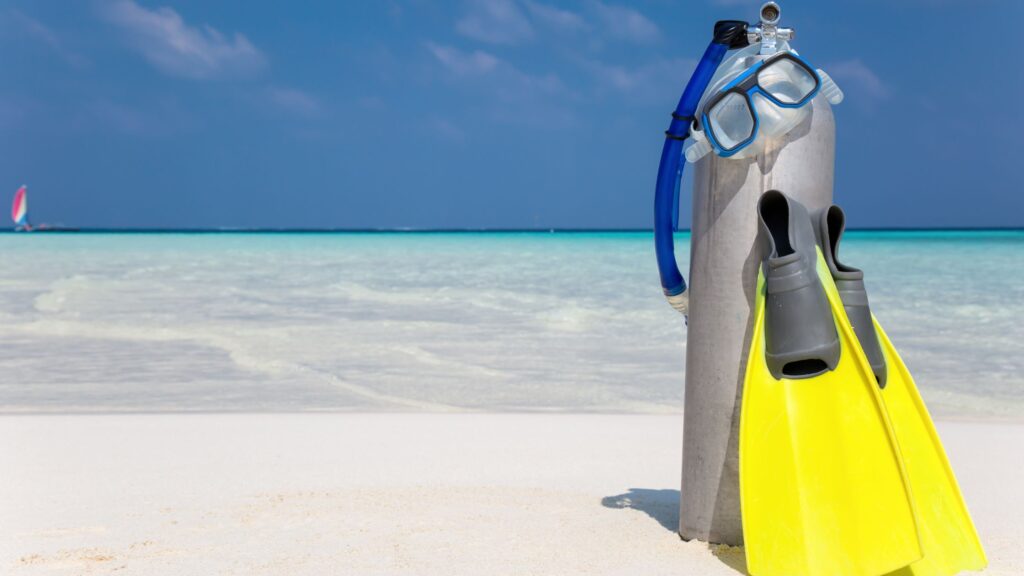
Scuba diving equipment is a collection of gear that lets you breathe, move, and survive underwater. Each item plays a specific role in safety, mobility, and comfort.
Essential scuba diving equipment includes:
- Scuba tank (cylinder): Stores compressed air or specialized gas mixtures.
- Regulator: Delivers breathable air from the tank, adjusting pressure for comfort.
- BCD (Buoyancy Control Device): A vest that holds the tank and adjusts buoyancy.
- Weights: Helps counteract buoyancy so you can descend and stay underwater.
- Fins: Increase propulsion and let you swim efficiently.
- Mask: Lets you see clearly underwater.
- Wetsuit or Drysuit: Keeps you warm (wetsuit for warm waters, drysuit for cold).
- Dive computer or depth gauge: Monitors time, depth, and decompression limits.
- SPG (Submersible Pressure Gauge): Tells you how much air is left in your tank.
Optional but helpful:
- Dive knife, underwater torch, signaling device, surface marker buoy (SMB), gloves, hood, snorkel (for surface breathing).
Each piece is designed for safety, comfort, and control, so divers can explore while minimizing risks.
RELATED: Is Scuba Diving Hard
What is SCUBA used for?
SCUBA (Self-Contained Underwater Breathing Apparatus) is used to allow people to breathe and move underwater independently, without being tethered to a surface air supply. While most people think of scuba diving as a recreational activity, its uses go far beyond vacation selfies and reef exploration.
Scuba is used for:
- Recreational diving – Exploring coral reefs, shipwrecks, caves, etc.
- Commercial diving – Underwater welding, construction, pipeline inspection.
- Scientific research – Marine biology, underwater archaeology, environmental surveys.
- Military operations – Covert underwater missions, ship hull inspections.
- Rescue and recovery – Search-and-rescue, recovery of lost items or bodies.
- Photography/filmmaking – Capturing ocean life for media, documentaries, or research.
In short: SCUBA is a tool for exploration, work, and survival beneath the surface — whether you’re chasing seahorses or installing offshore oil rigs.
What is one advantage of scuba diving?
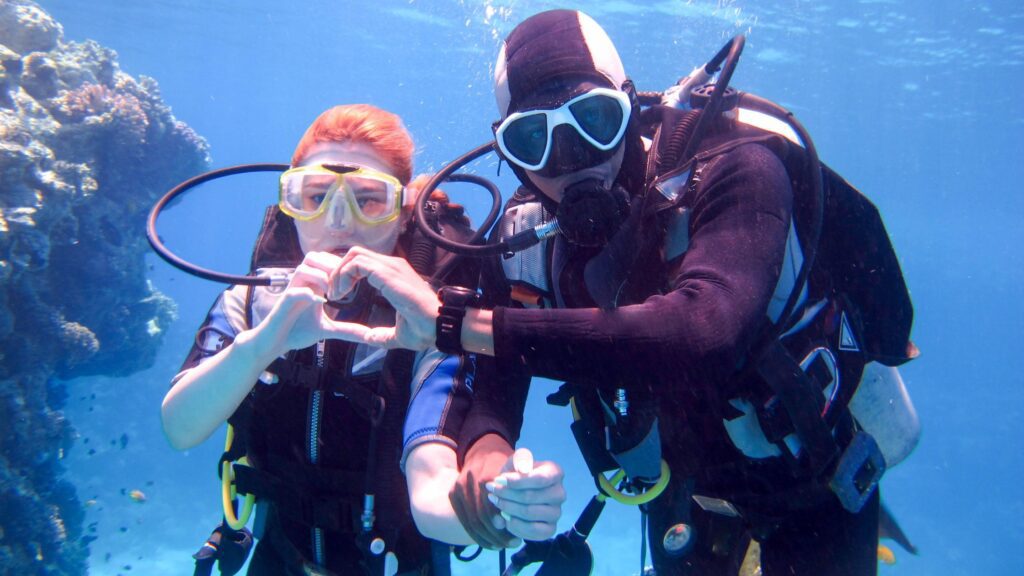
There are many, but one standout advantage of scuba diving is the sense of total freedom and weightlessness.
When you’re underwater:
- There’s no gravity holding you down.
- You float effortlessly in all directions — it’s the closest most of us get to flying.
- It’s calm, quiet, and meditative (no emails, no traffic, no politics, just fish).
Plus, it offers a powerful mental health boost. Studies have shown scuba diving reduces stress, anxiety, and even symptoms of PTSD by promoting mindfulness and controlled breathing, much like yoga or meditation.
Also, you get to explore parts of the planet that 99% of people never will — that’s a unique kind of privilege.
Who invented SCUBA?
While there were early versions of underwater breathing gear throughout history, modern SCUBA as we know it was co-invented in 1943 by:
- Jacques-Yves Cousteau (a French naval officer, explorer, and filmmaker)
- Émile Gagnan (a French engineer)
Together, they developed the Aqua-Lung, the first successful open-circuit system that let divers breathe compressed air underwater through a demand regulator. This breakthrough gave birth to recreational scuba diving and revolutionized underwater exploration.
Before that, people used bulky surface-supplied systems like diving bells and air hoses which are not exactly freedom-friendly.
How does SCUBA work?
Scuba diving works by providing the diver with compressed air in a portable tank, which they breathe through a regulator that adjusts air pressure to match the surrounding water pressure.
Step-by-step on how scuba works:
- Tank holds high-pressure air (usually around 200–300 bar).
- Regulator (first stage) connects to the tank and reduces the air to intermediate pressure.
- Regulator (second stage) is the mouthpiece — it gives air only when the diver inhales.
- BCD (Buoyancy Control Device) lets you add or release air to rise or sink.
- Fins and suit help you move and stay warm underwater.
- Pressure and depth gauges help monitor your air supply and diving limits.
You breathe normally, just like on land — but you’re underwater. The equipment handles pressure changes and airflow, so you can focus on swimming with turtles instead of gas laws.
Is Scuba Diving Safe?
Here’s the truth: Yes, scuba diving is safe if done correctly.
But that doesn’t mean you won’t run into myths.
Common Myths & Facts:
- Myth: “You’ll run out of air and drown.”
Fact: Your gear includes gauges, alarms, and a buddy system to prevent that. - Myth: “Sharks will eat me.”
Fact: Sharks have more to fear from humans than the other way around. Most divers never see sharks. When they do, it’s the highlight of the dive. - Myth: “It’s too technical.”
Fact: Beginner courses simplify everything with hands-on, gradual learning.
According to Divers Alert Network (DAN), the fatality rate in scuba diving is about 1 per 200,000 dives — less than horseback riding or even jogging. Most incidents occur due to diver error or skipping training.
If you’re healthy, cautious, and certified, scuba diving is an incredibly safe and peaceful experience.
Do You Need Certification to Scuba Dive?
Short answer: Yes, you need scuba certification if you want to dive independently.
But there are ways to try it first without full certification.
Types of Certifications:
- Open Water Diver (e.g., PADI, NAUI, SSI) – The most common entry-level license
- Advanced Open Water Diver – For deeper dives, night dives, or wreck dives
- Rescue Diver, Divemaster, Instructor – For going pro
Try-Before-You-Buy Option:
Discovery Dive or Resort Course – A one-day guided dive for beginners, usually maxing out at 30 feet. Perfect for vacationers who aren’t ready to commit.
So, if you’re asking, “what does scuba diving stand for in a training sense?” It means responsibility and preparation but also accessibility, thanks to beginner-friendly programs.
Do You Have to Be Fit to Scuba Dive? Who Can Do It?
Great news: Scuba diving isn’t just for athletes or Instagram influencers.
Many dive centers welcome people of all shapes, sizes, and ages.
General Requirements:
- Basic swimming ability (float and swim ~200 yards)
- Reasonable cardiovascular health
- Comfortable in water
- At least 10–12 years old for junior certifications
There are even specialized programs for:
- Adaptive divers (e.g., amputees, paraplegics)
- Senior divers (age is not a limit — mobility and health are)
If you’re unsure, just take a medical questionnaire or check with a dive doctor.
Common Scuba Diving Acronyms & Jargon (A Quick Glossary)
Scuba diving has more acronyms than a military submarine. Here’s a quick cheat sheet to demystify the language:
| Acronym | Meaning |
| SCUBA | Self-Contained Underwater Breathing Apparatus |
| BCD | Buoyancy Control Device |
| OW | Open Water (refers to certification or dive type) |
| NDL | No Decompression Limit |
| DAN | Divers Alert Network |
| RDP | Recreational Dive Planner |
| CESA | Controlled Emergency Swimming Ascent |
So, when you hear someone saying “I did an OW dive at 18m with no NDL breach,” you can at least nod confidently (and then Google it later).
Is Scuba Diving Expensive? What Does It Really Cost?
Many people think diving is a rich person’s sport. Truth: it can be affordable — or it can be Rolex-on-a-reef expensive.
| Item | Estimated Cost (USD) |
| Discovery Dive | $60 – $120 |
| Open Water Certification | $350 – $600 |
| Full Set of Gear | $1,500+ (or rent for $30–$60/day) |
| Dive Trip (Local) | $50 – $150 |
| Dive Trip (International) | Varies widely (e.g., Cozumel vs. Maldives) |
Many divers rent gear, join group dives, or buy used to save costs. It’s not as cheap as hiking, but it’s also not yachting-level luxury.
Where Can You Go Scuba Diving?
You don’t need to fly to Bali (unless you want to). You can find dive sites nearly everywhere — oceans, lakes, quarries, rivers.
Best Beginner-Friendly Locations for scuba diving:
- Cozumel, Mexico
- Key Largo, Florida
- Bonaire, Caribbean
- Hawaii (esp. Big Island)
- Great Barrier Reef, Australia
Even non-tropical areas like British Columbia, Norway, or freshwater quarries offer unique dives — with proper gear, of course.
What Does Scuba Diving Stand For Emotionally?
Okay, now we’re going philosophical.
What does scuba diving stand for beyond the acronym?
- Peace – Imagine floating in a silent, alien world with only your breath.
- Discovery – Seeing creatures you didn’t know existed 30 minutes ago.
- Overcoming fear – Breathing underwater for the first time is empowering.
- Connection – To nature, your dive buddy, and even yourself.
There’s a reason so many divers say, “It changed my life.”
How to Get Started Safely and Smartly
Here’s how to take the plunge:
- Try a Discovery Dive at a resort or local dive center.
- Read reviews and find a certified instructor you trust.
- Ask questions — no one starts off knowing what NDL or BCD means.
- Invest slowly — rent gear at first; buy later if you’re hooked.
- Never dive alone — always use the buddy system.
The Bottom Line on What Does Scuba Diving Stand For
What does scuba diving stand for? It started as an acronym for Self-Contained Underwater Breathing Apparatus. But today, it stands for much more.
It stands for curiosity, courage, peace, and play. It stands for a community of people around the world who love to explore beneath the waves. It stands for learning a skill that not only connects you to the planet — but also to a version of yourself you didn’t know existed.
